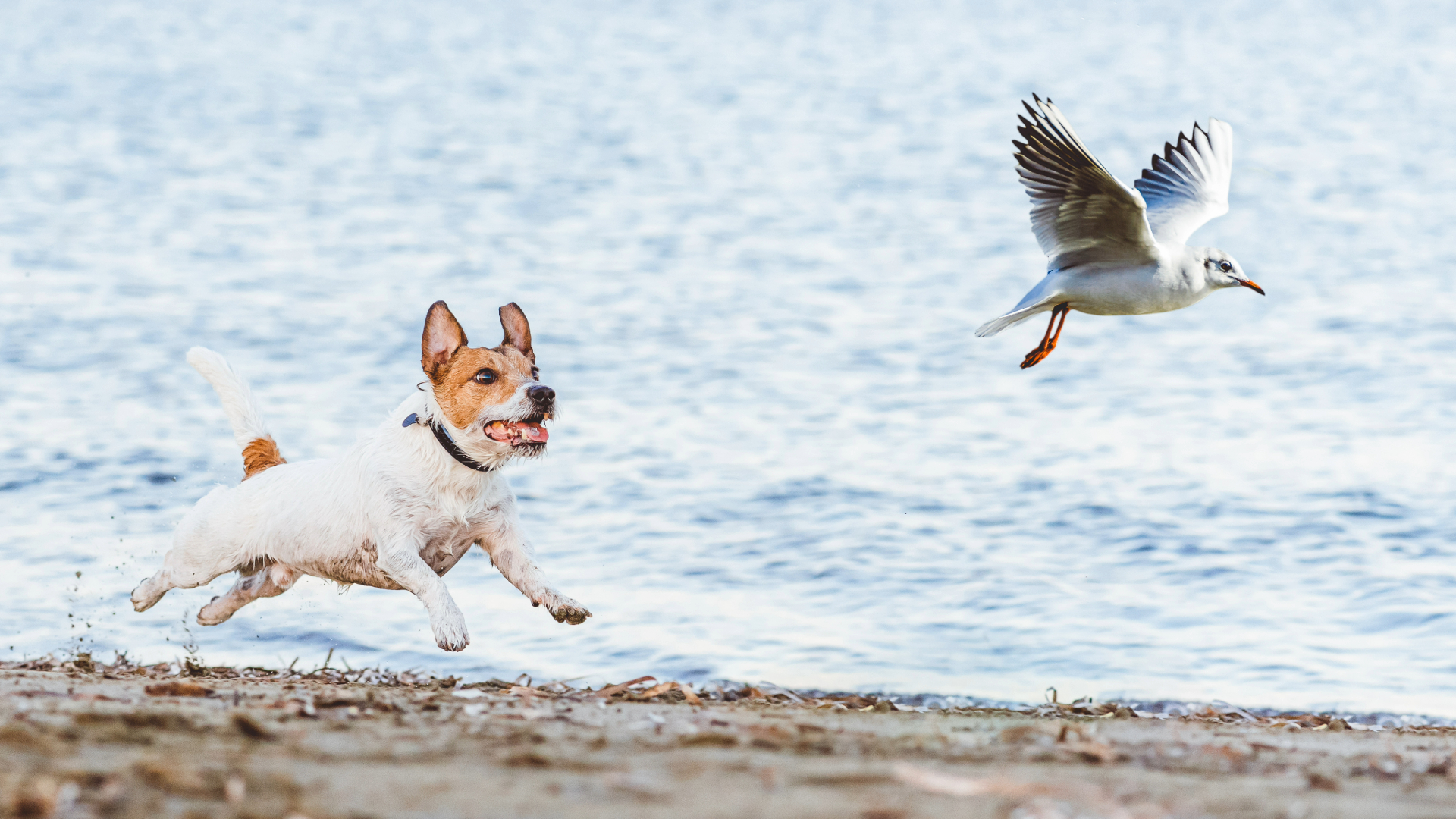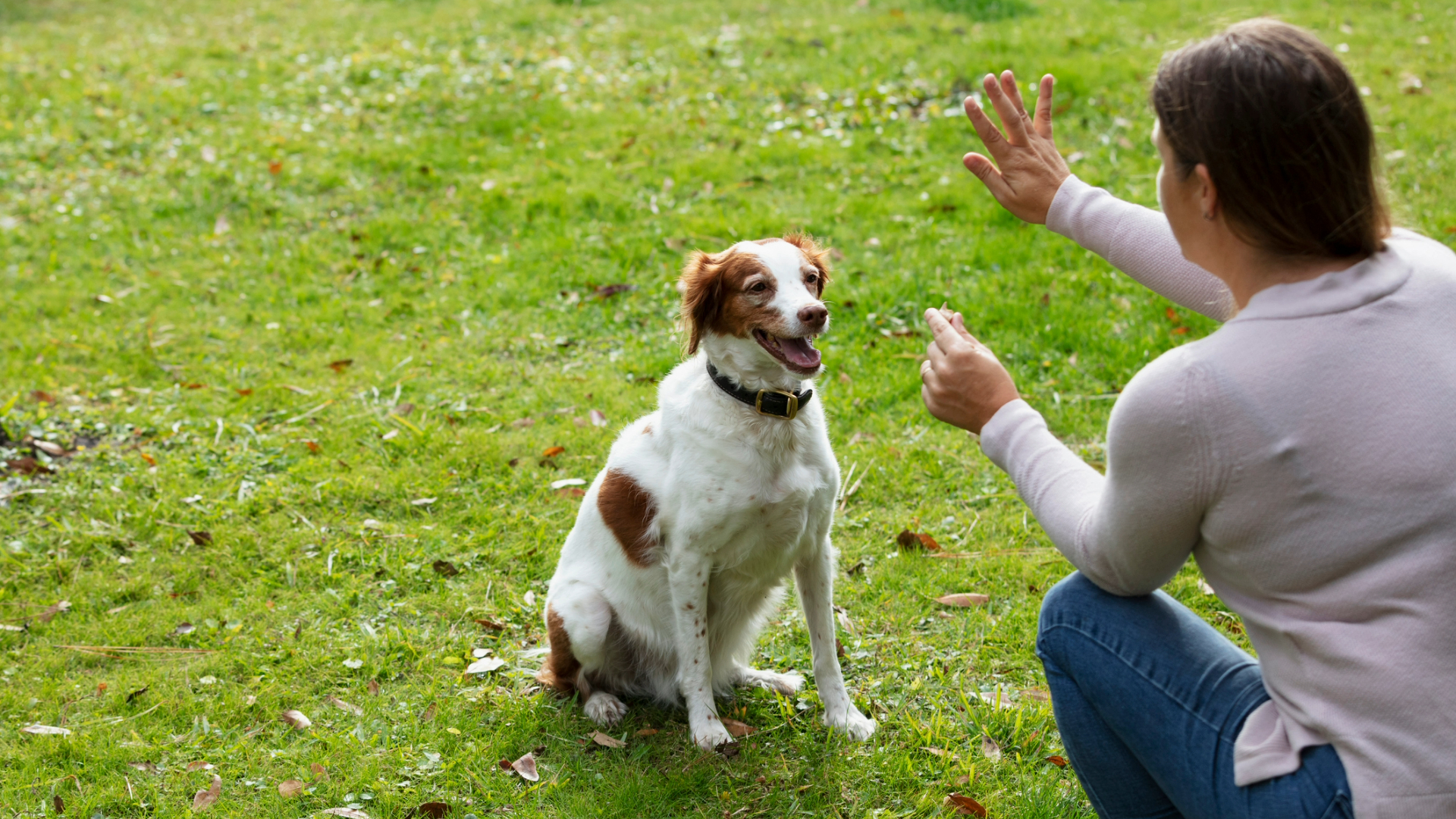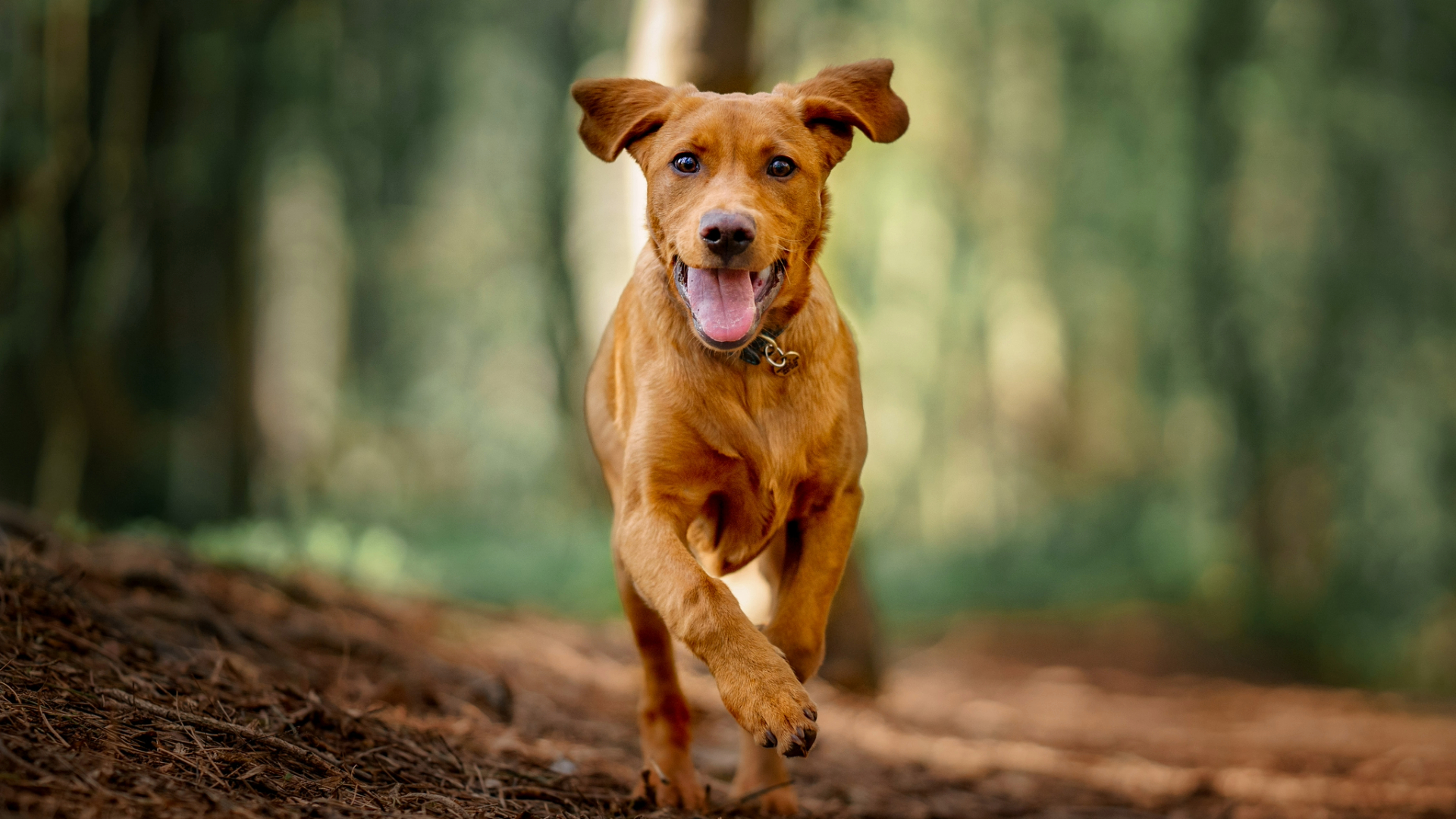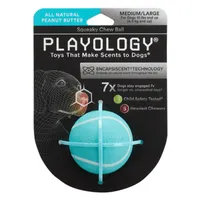High prey drive in dogs: what it means and how to manage it
I’m a dog behaviorist - here are my top tips for managing high prey drive in dogs.

High prey drive in dogs can be one of the most challenging behaviors for owners to control, not least because it is a dog's natural instinct.
When I rescued Pepper, an English setter/pointer cross in 2012, I had no idea about managing a breed with a high prey drive.
Within four days of coming home, Pepper jumped the garden wall, galloped down to the farm fields, and promptly chased the farmer's wife's horses around a six-acre field. I was powerless to stop her. We only managed to catch her because we caught the horses and led them to the stable yard, where I could grab Pepper and embarrassingly walk her back home.
If you find yourself in a similar situation, you could use one of the best pet trackers to locate your dog and make sure they’re safe. This guide on how to calm a reactive dog might also come in handy.
I’m a dog behaviorist with experience working with high prey drive in dogs - these tips will help you understand and manage this behavior.
What is prey drive in dogs?
Most dogs enjoy chasing animals like squirrels, deer, and rabbits. It's a natural hunting instinct for a dog. Still, for some dogs, the prey drive is exceptionally high so we must find a way to help them channel their instinct or it can lead to problematic behavior.
When a dog is in full hunting mode, it is exciting for them. Whatever they are chasing is far more interesting than we are. No amount of shouting or whistling in the background will distract your dog from the chase. The problem with this scenario is that chasing animals can lead to accidents or injuries.
Get the best advice, tips and top tech for your beloved Pets
If you live in a rural community, your dog may chase livestock and be further at risk if he kills or injures a farmer's animals. Another concern is the dog could run so far away he could get lost or have to navigate a busy road.

Which breeds have a high prey drive?
Some dogs have naturally higher prey drive than others, particularly sighthounds like lurchers and greyhounds. Hound breeds, pointers, terriers, and spaniels also enjoy chasing and can roam great distances fast.
Some dogs, like a foxhound and beagle, have a hard-wired prey drive. You may have to find alternative ways to exercise your dog instead of loose running, such as canicross or hiring a secure dog field for safe exercise. I bonded with my dog through running - here’s how you can do the same.
How to manage a dog with a high prey drive in dogs
Training your dog to manage his chasing instinct is the only way to minimize the chances of it happening. I will provide some tips below with the proviso that it is almost impossible for some breeds to "safety proof" the chasing behavior.
If your dog is a puppy, start training from day one to teach them to focus on you. If you have rescued a dog with a high prey drive, it may be a little more challenging and take longer to build your bond and teach the dog to control his natural instincts.
The following tips will help you implement a training protocol for your dog. Always use positive reinforcement and give lots of praise when your dog succeeds. You could use one of the best dog treats as a reward.
Wellness CORE Tiny Trainers Tender Turkey & Pomegranate Dog Treats
These low-calorie treats are perfect for training and come in bite-size pieces. Containing omega-3 and omega-6 fatty acids, they’ll contribute towards healthy skin and fur.
1. Teach your dog a "leave" command
Practice teaching your dog to “leave” in the house with food or toys. When you are confident your dog understands the command, take the training into the garden and practice on a long line during your walks.
2. Teach a "stop" command
I routinely teach the stop command as an emergency protocol. With practice, it can become a brilliant way to stop the chase before it begins. When I first got Poppy, a Weimaraner cross rescue, she chased a deer across five fields. She was a tiny black dot in the distance. After that, I taught her the stop command, and within a few months, she stopped chasing animals.
Walk your dog to heel at a slow pace and periodically halt. The aim is for your dog to return to your side instead of lunging ahead. Once your dog understands the exercise, add the word "stop". Say it firmly so that in an emergency, your dog isn't surprised by your sharp tone of voice if he sees a deer on the horizon and starts to run.
For more, here are five of the most important dog commands and how to teach them.

3. Teach your dog a fail-proof recall
A solid recall is vital if you have a breed with a high prey drive. I have owned pointer crosses since 2010 and find the easiest way to manage the recall is to teach my dogs to stay within a safety parameter.
Hounds and pointers typically like to roam ahead, but it is easier for them to take chase if they are further away from you. Unless you are in a secure field, I suggest a maximum recall distance of less than fifty feet.
Sometimes, training a dog with a high prey drive takes a bit of creativity. With the easily distracted and single-minded Poppy, I used a clicker out on a walk. When she made eye contact, I pressed the clicker and gave her a treat. It taught her to focus on me instead of scouring the horizon for something to chase.
Try using a long line to practice distance recall. Once your dog understands the boundaries, you can try trailing the long line. I did this with my pointer cross, Luna. It was a year before I ditched the long line, but her recall is 100% now, so it is well worth the time and effort to train a consistent recall.
It's vital to keep your dog on a leash around livestock. Always check fields before letting your dog off the leash. It's better to be safe and control your dog even if the livestock is a few fields away. Your dog could chase a rabbit and jump into a field of sheep when the bunny dives under a fence.
For more tips, here are three reasons why your dog’s recall isn’t reliable and what you can do about it.

4. Channel your dog's prey drive
Many dogs enjoy chasing a ball. I would refrain from throwing sticks as that can lead to injuries. My dog Ellie, a collie/labrador, was obsessed with chasing sticks. One day, a stick pierced her throat and we had to rush her to the vet. I've never thrown a stick since!
Playology Scented Squeaky Chew Ball Dog Toy
Your dog will enjoy hours of fun playing with this squeaky dog ball that can bounce, squeak, and float. It also contains a natural scent, using Encapsiscent Technology, which will grab your dog’s attention.
Many dogs enjoy playing tug games; for high-energy dog breeds, canicross is excellent exercise. In addition, consider agility training, flyball, or scent training. Choose whatever activity your breed is more predisposed to enjoy.
If your dog's prey drive is difficult to manage, it's advisable to teach your dog to wear a comfortable muzzle. That way, if he does catch an animal, he cannot hurt it.
Owning a dog with a high prey drive can be tricky. However, by understanding a dog's natural drive, you can help him channel energy into activities he enjoys so he has a rewarding life without chasing other animals.
We understand that owning a reactive dog is hard, here’s how I navigated the social challenges with my pooch. Want to improve your dog’s impulse control? Here are seven fun games for reactive dogs. Or, check out: My dog kept bolting – here’s how I rebuilt her recall skills with the help of a trainer.

Jan is a dog behaviorist and writer living in the Cotswolds, UK. She qualified as a dog behaviorist in 2012 after training with Sarah Whitehead, a Certified Clinical Animal Behaviorist with a MSc in Animal Behavior. Jan has shared her life with dogs for over fifty years and is fascinated by behavior. She enjoys helping people better understand their dogs to develop a deep bond and enjoy time together. Jan particularly enjoys working with impulsive and reactive dogs as her legacy from helping Poppy, her rescue Weimaraner cross overcome fear reactivity.


